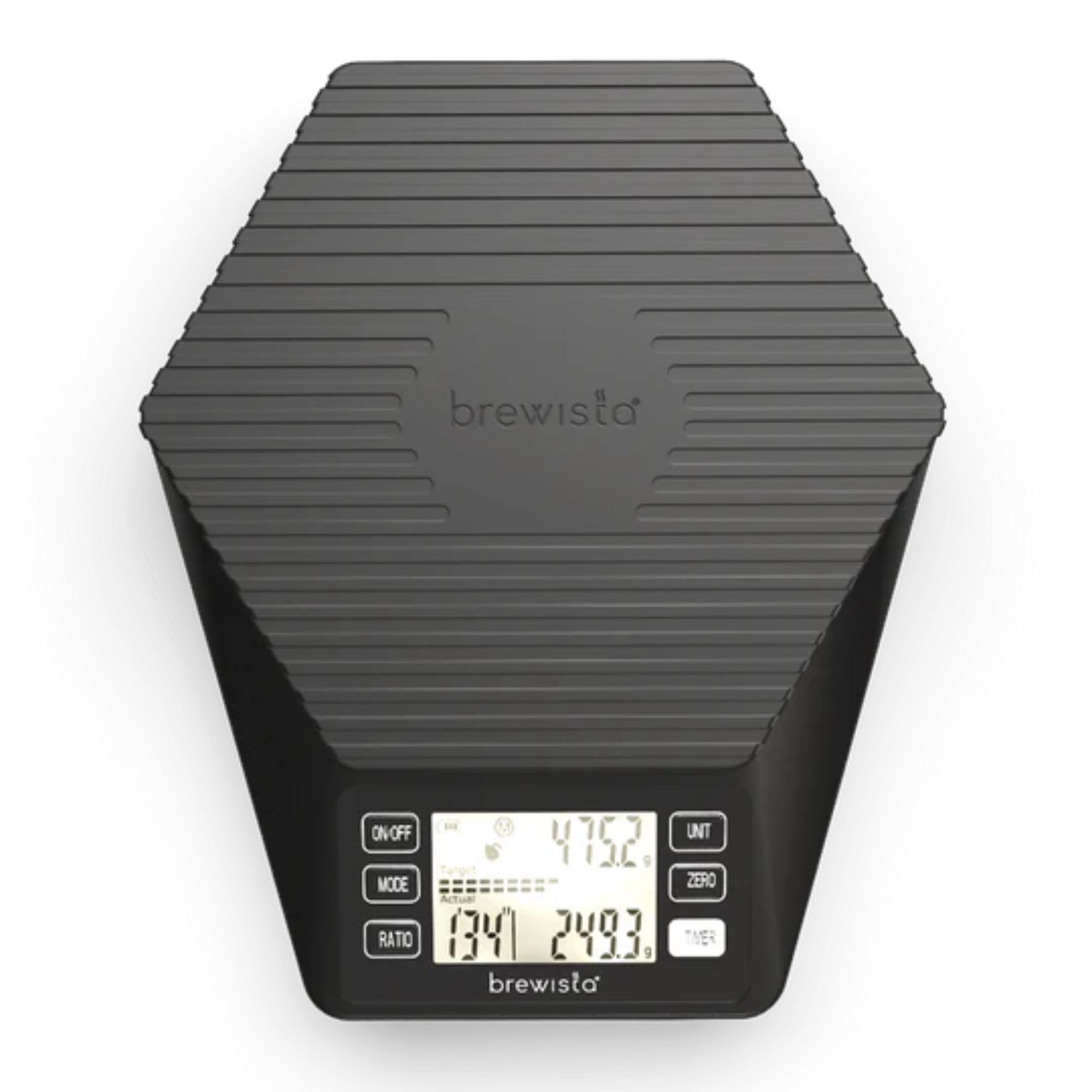Our resident barista just improved 'The Ultimate AeroPress Recipe' – here's how
We already know that they make delicious coffee, but how do you get your AeroPress coffee to taste even better?
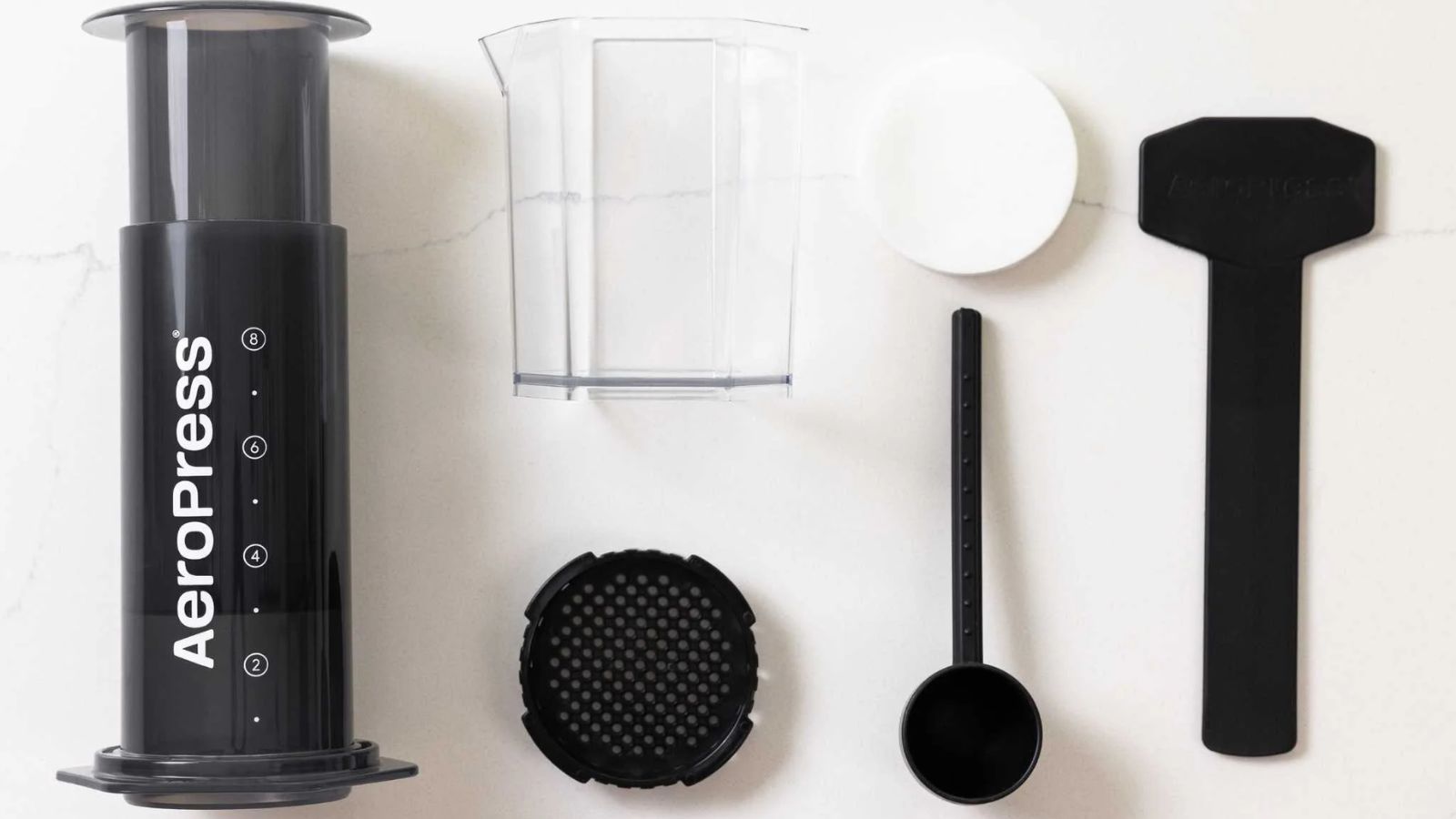

The globally famous 'Ultimate AeroPress recipe', written by James Hoffman, winner of the 2007 World Barista Championship is a must-try if you own an AeroPress. It's simple, easy to follow, and guarantees you a delicious coffee, but could it be better?
Whilst we were testing different methods for how to use an AeroPress, we couldn't help experimenting. With some extra saturation and different grinds, I bettered the Ultimate AeroPress recipe to make the ultimate, Ultimate AeroPress recipe.
After months of testing, refining, sipping, and savoring, we've reached total perfection. If you want to impress your friends with your AeroPress, here's everything you need to know.
The Ultimate AeroPress Recipe, according to a barista
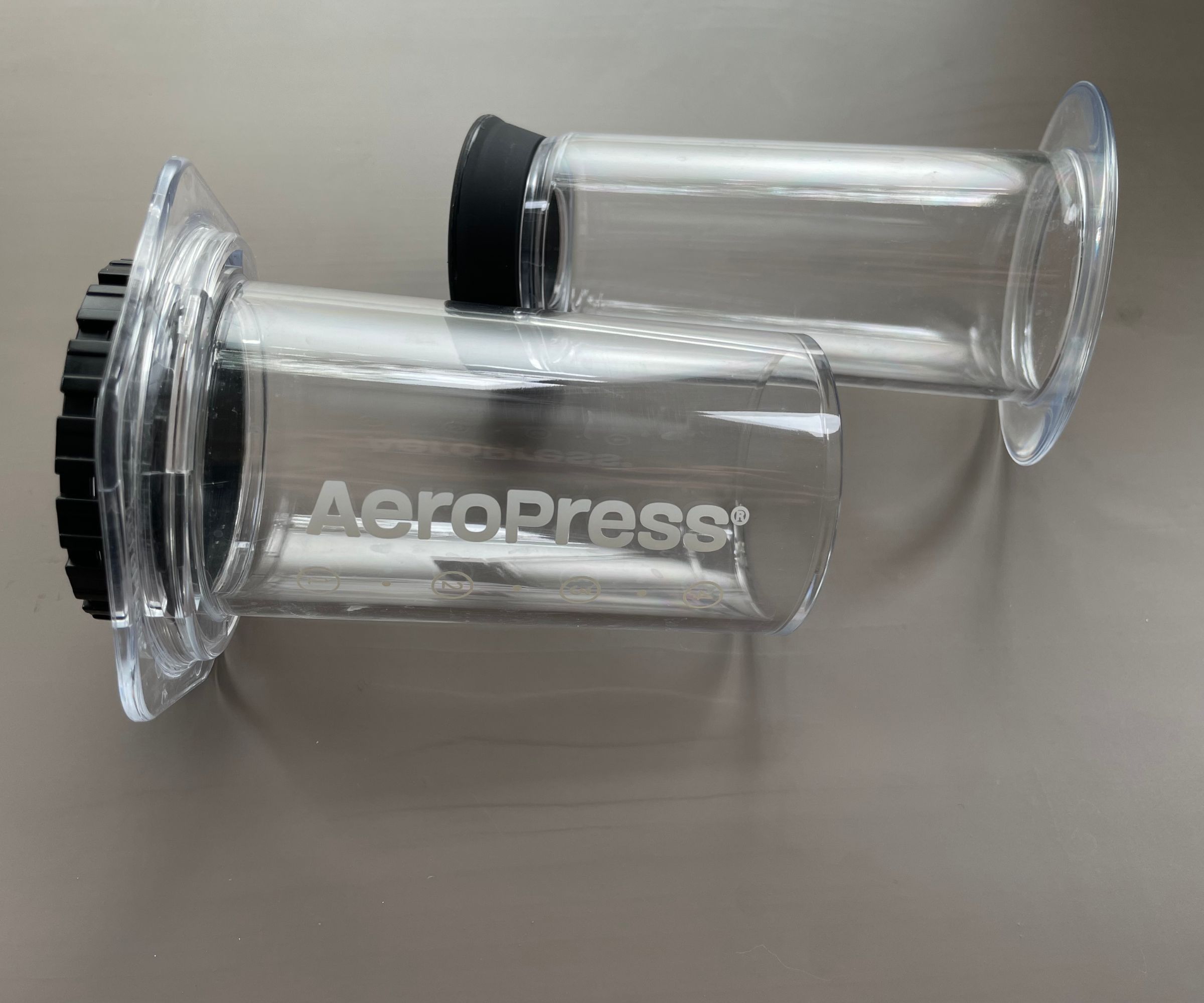
Before we dive deep into the details, you probably want to know what James Hoffman's Ultimate AeroPress recipe looks like. It's simple and flexible. It's designed to make a reliably fantastic coffee every time, setting you up for success.' James recommends experimenting from the skeleton of his recipe though. Here it is:
Use eleven grams of coffee, which is lightly roasted and ground at the finer end of medium. Use your AeroPress in an upright position, with a paper filter. Pour 200 ml of water at 210°F. Let your coffee brew for two minutes and then press gently down. It really is that simple, but here are the details you'll want to know to make it extra perfect.
The Ultimate AeroPress recipe and method
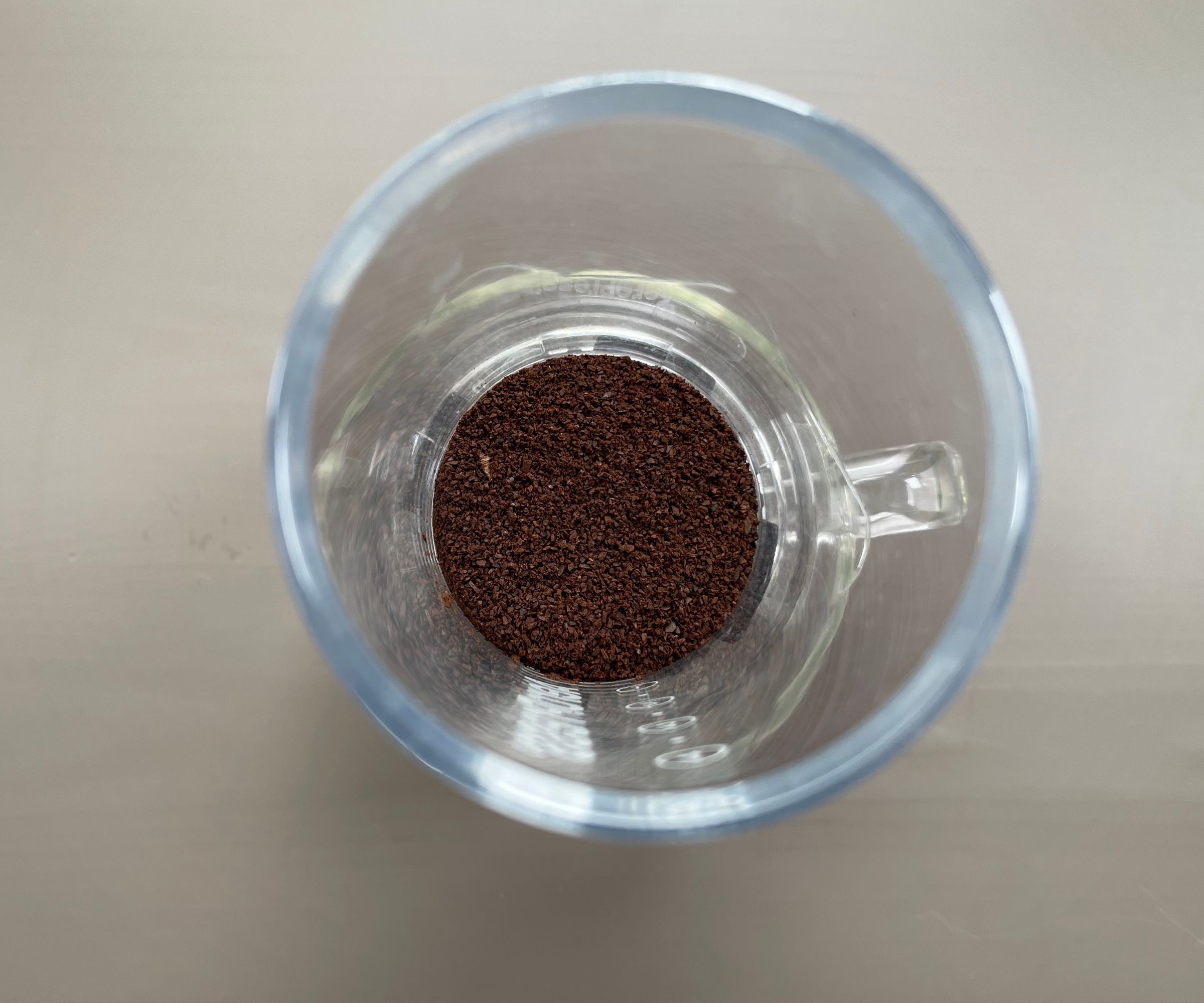
Before you get brewing with the ultimate AeroPress recipe, you'll need to prep a few things.
First, you'll need to have medium ground coffee. The grind size that you opt for ultimately depends upon which beans you use. In James Hoffman's recipe, he uses lightly roasted coffee beans 'for quite a strong cup of coffee at a lower ratio.' I like to use a medium roast, Union's Natural Spirit is my bean of choice, and you can go even darker. If you do this, just grind your beans a little more coarsely and use fewer per liter, something closer to 60 grams will give you the most delicious results.
Design expertise in your inbox – from inspiring decorating ideas and beautiful celebrity homes to practical gardening advice and shopping round-ups.
You'll also need coffee scales and, ideally a gooseneck kettle. A normal kettle will do a reasonable job, but if you're aiming for perfection, you'll get a more precise pour and even saturation with something like the Fellow Stagg (which also happens to be Oprah's favorite kettle).
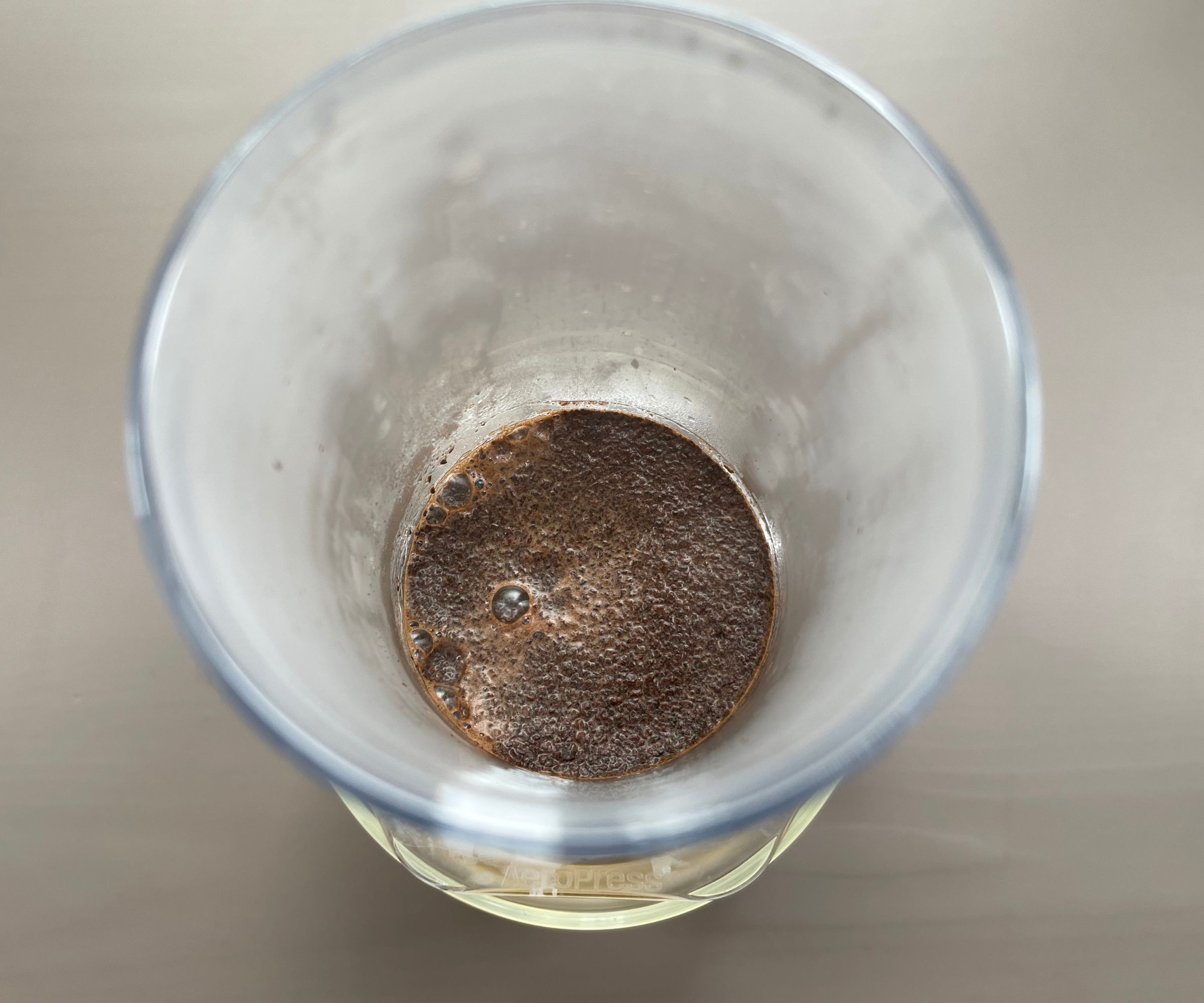
Once all your coffee kit is set up, you can get brewing. James Hoffman's Ultimate AeroPress recipe starts by placing the paper filter in the cap. James doesn't rinse his filter or make use of the metal filter, which is fine if you want a smooth cup. As someone who likes a super smooth cup of coffee, I'd recommend using both the paper and metal filter. Also, even though James doesn't rinse his filter paper, I recommend that you wet it first. This will prevent your paper from absorbing any of the delicious coffee oils, ensuring that all of the flavors end up in your cup.
Place the AeroPress on top of your cup or brewing chamber. James says 'Make sure it's sturdy because you're going to be pressing on it in a second.' I brew directly into my cup, since I like to drink coffee as soon as it's brewed. You'll get the freshest, fullest flavors that way.
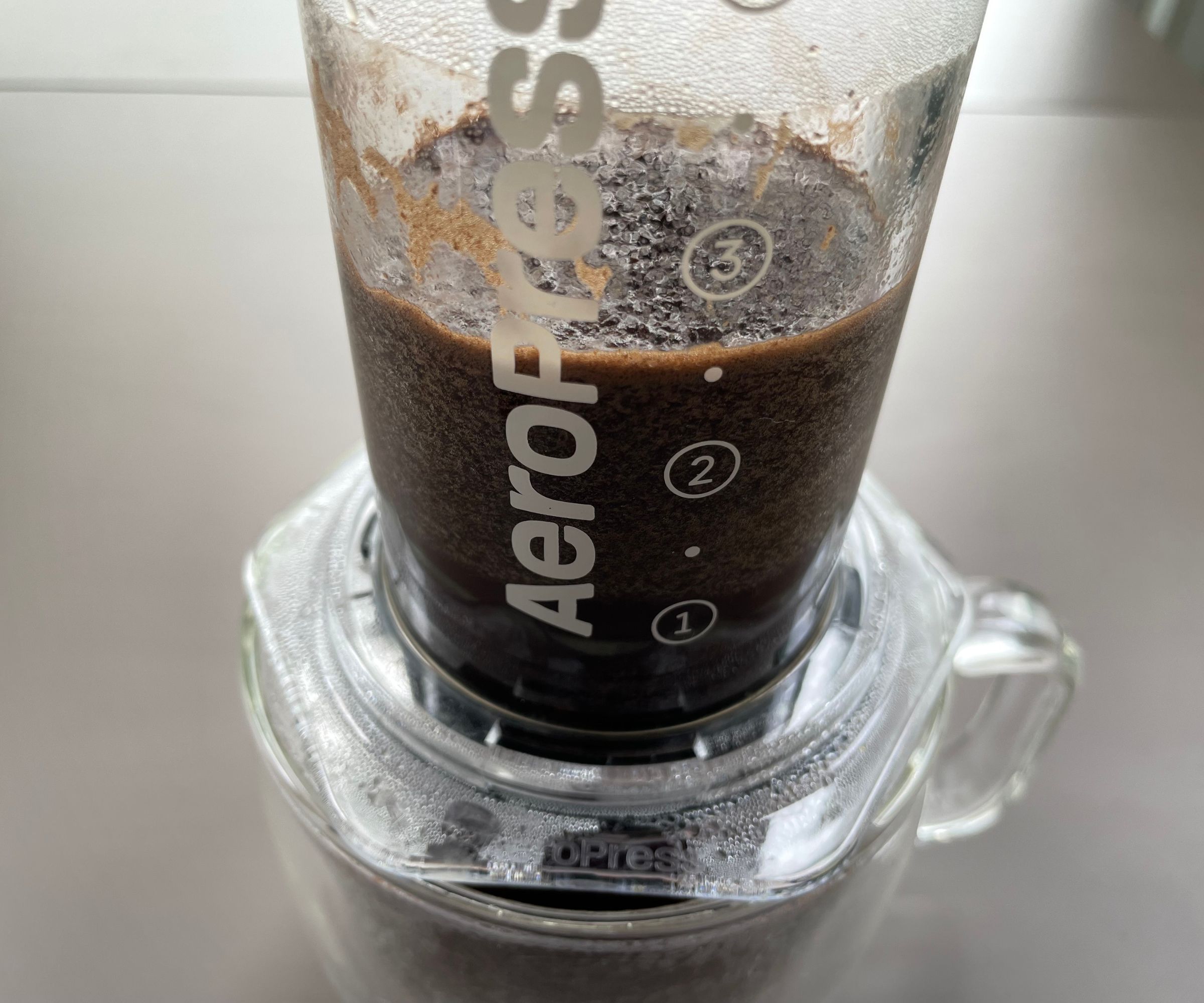
Add 11 grams of coffee to start with, as James recommends. You can adjust quantities as you get used to which flavors you like.
Next, boil your water. James says 'With lighter roasts, you can go all the way up to boiling. For darker or medium roasts, drop the temperature. For a really dark roast, I'd be brewing even under 90 degrees, maybe even down at 80.' That's why a temperature-controlled kettle is really useful.
I'd recommend filtering your water before you boil it. This is a somewhat controversial point, since plenty of people say that the minerals enhance the flavors of your coffee. However, you can't rely on consistent quantities of minerals in your water, so make sure to invest in a filter pitcher (here are our suggestions for the best) or filter tap so that you can rely on repeatable coffee flavors.
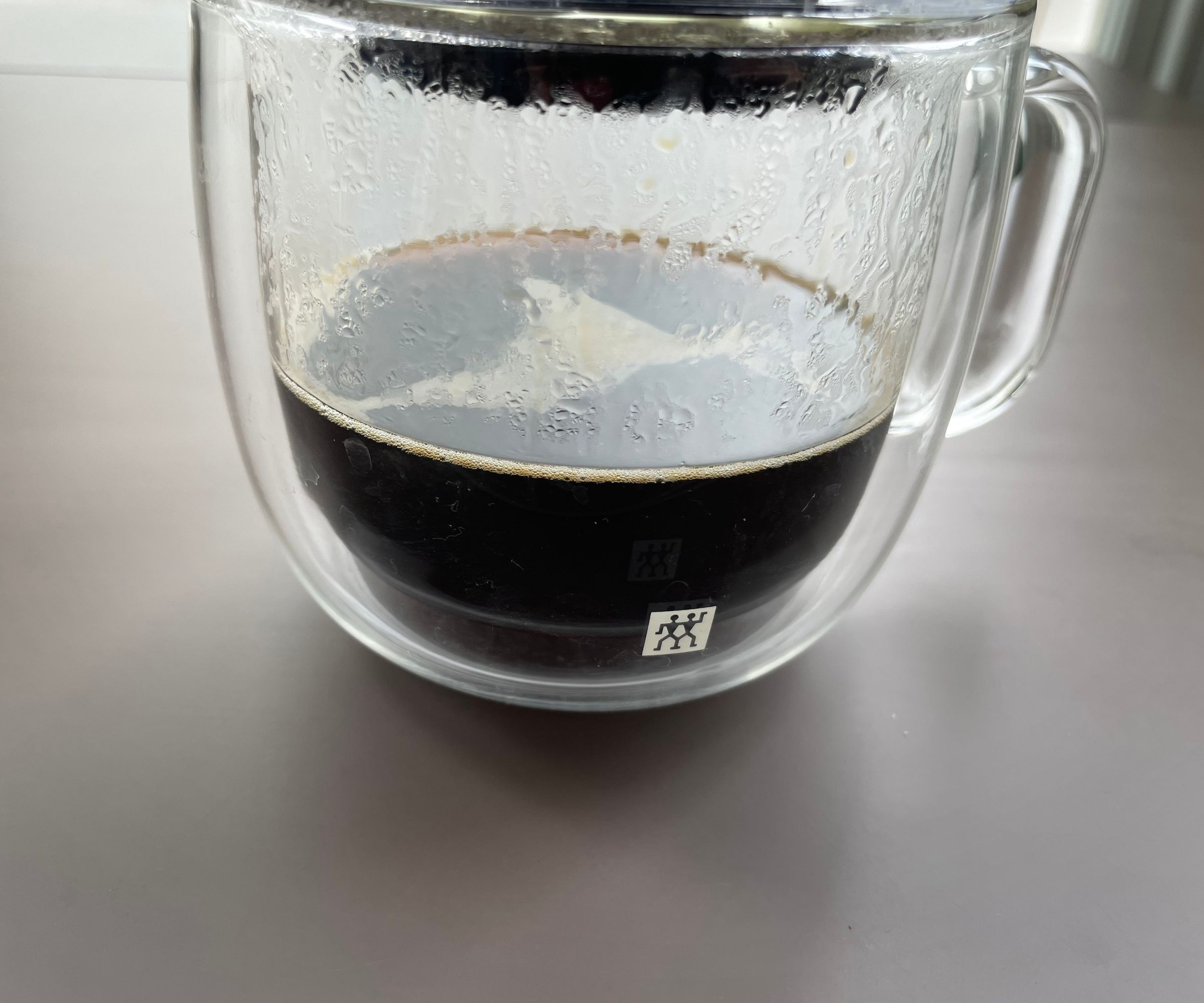
Sitting your container and AeroPress on some coffee scales, start a timer. James adds all of his water at once, but I'd recommend pouring 50 ml over your grounds, inserting the plunger and then pulling up a little to create a vacuum, stopping the water from filtering through into your cup. Your coffee will be blooming here, letting all the carbon dioxide out of your coffee, making it taste sweeter and smoother.
After thirty seconds, you can take the plunger out and add the remaining 150 ml, again putting the plunger in and pulling up a little. The key to both pours, according to Hoffman is to 'try and get the grounds wet as quickly as possible by pouring into the middle of the AeroPress.' If you have a gooseneck kettle, you can do a spiral, covering every cluster of grounds.
James waits two minutes for his to brew. He does a very gentle swirl holding the AeroPress and base of the coffee. This is an unmissable step. He says, 'When you're swirling, you're not trying to create a vortex in there. You're just trying to gently knock the ground coffee that's formed a crust down so that it starts to sink to the bottom. Wait twenty seconds and then start to press.'
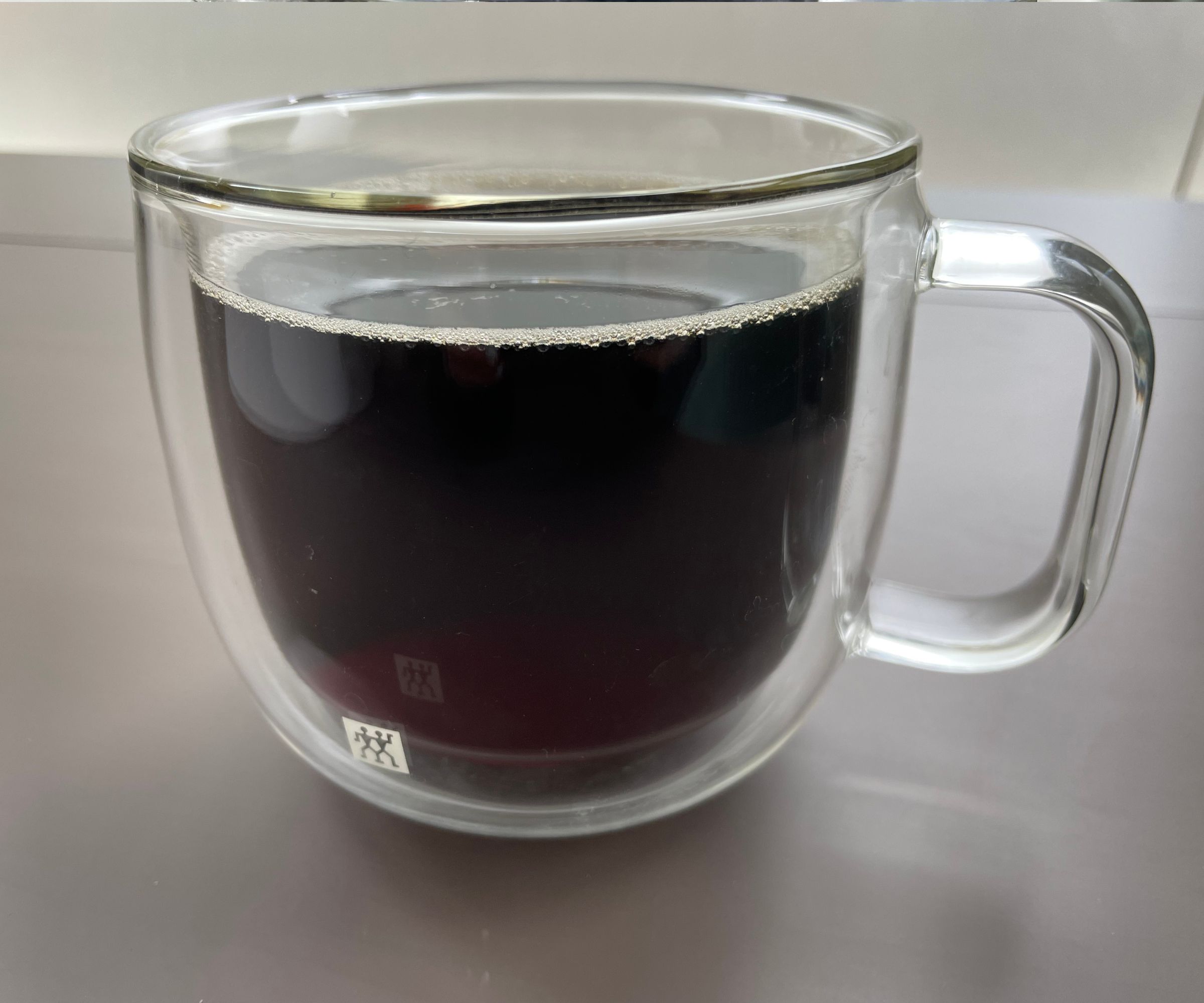
James says to be gentle and not to lean into your press. Steadily push down and you'll see your coffee drip through. Once you've finished pressing, pull up a little bit to stop your AeroPress from dripping.
What does James Hoffman use in his coffee station set-up?
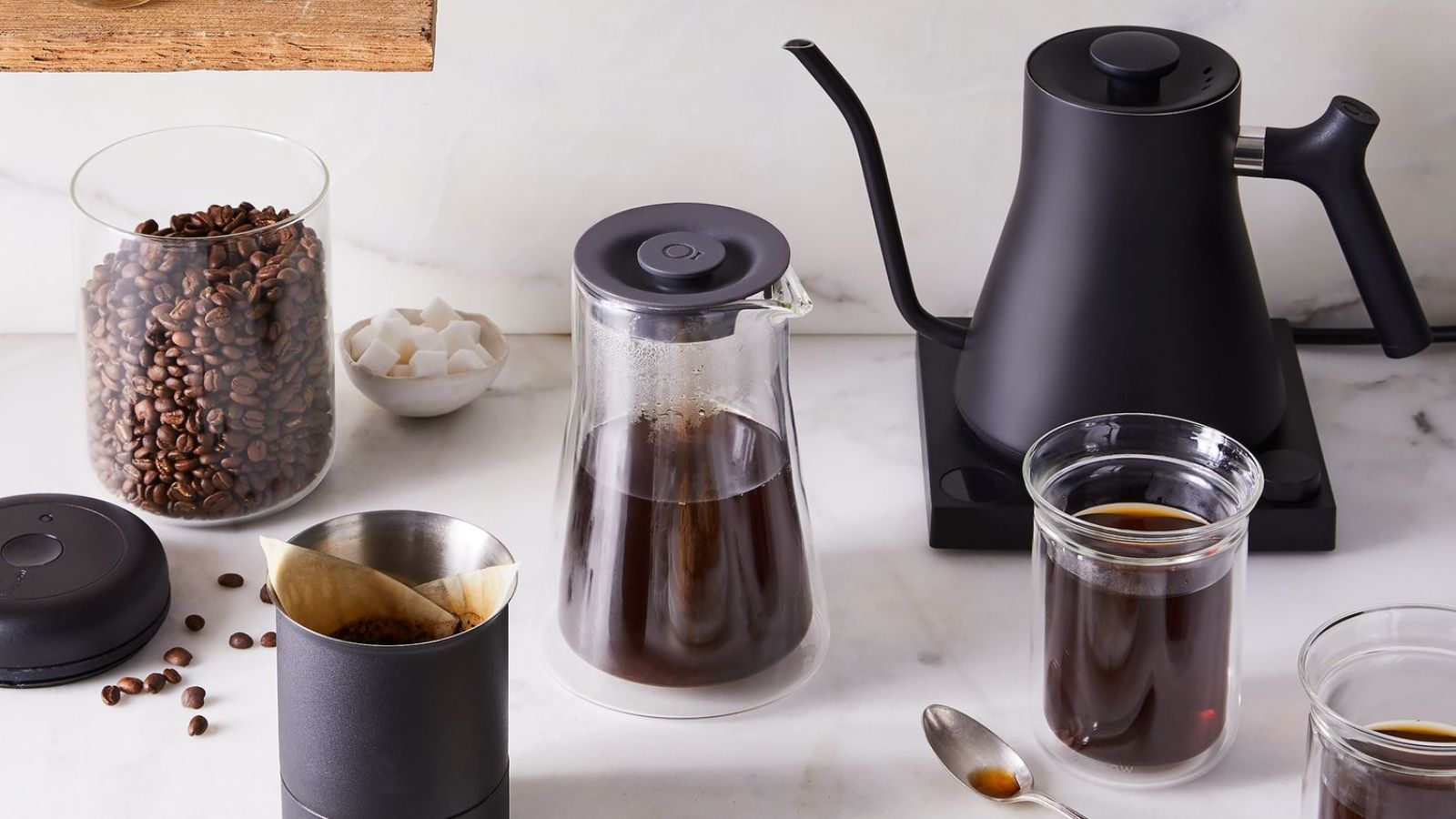
We all want to know what the experts use and, turns out, James Hoffman has exceptional taste. Here's his kettle, coffee scales, and AeroPress. These are some of the more expensive options, but, having tested them, I can say that they're worth every penny.
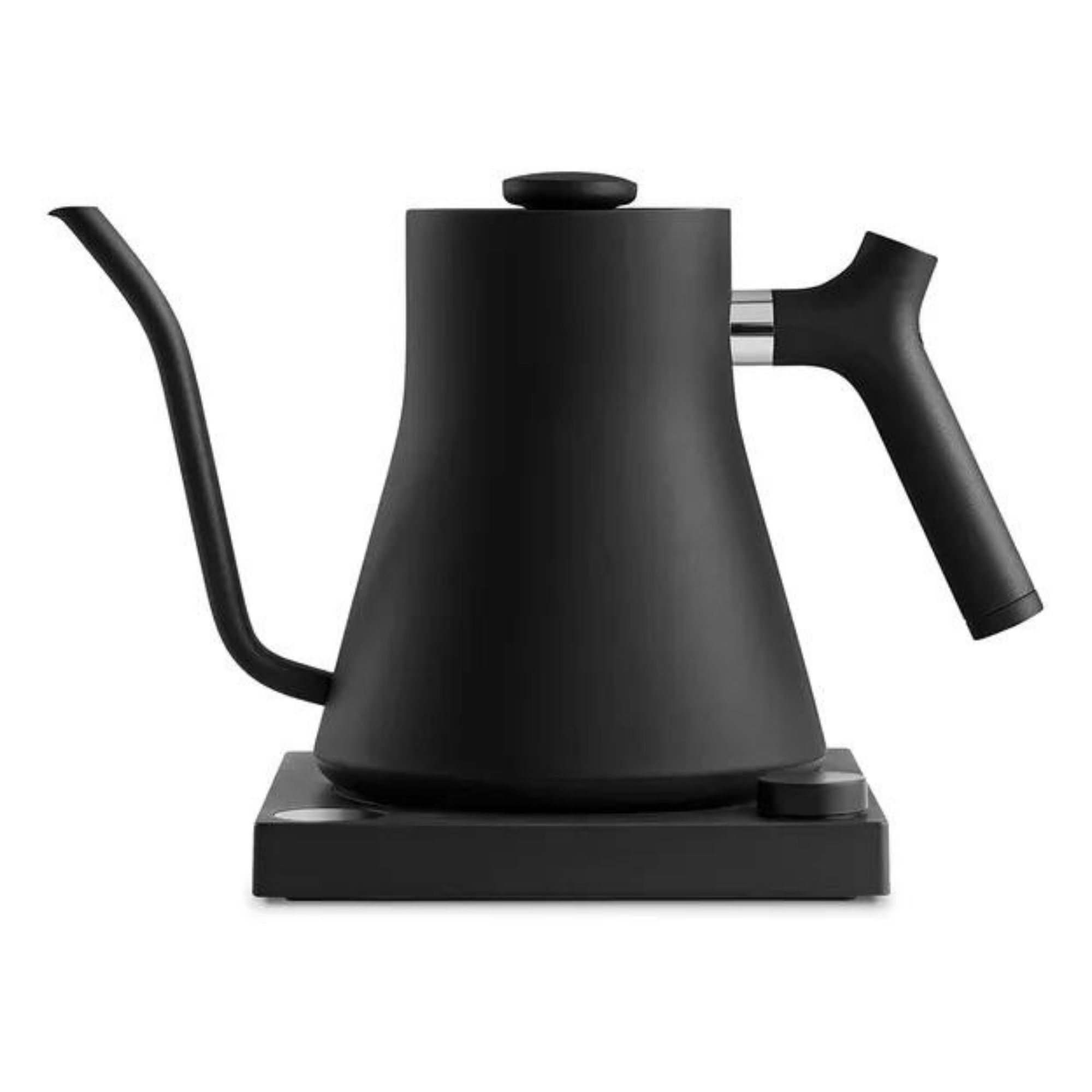
It's no surprise that this is the kettle used by the experts. It's the one James Hoffman uses as well as me and almost all the other baristas I know. It's beautiful, temperature variable, and gives a precision pour.
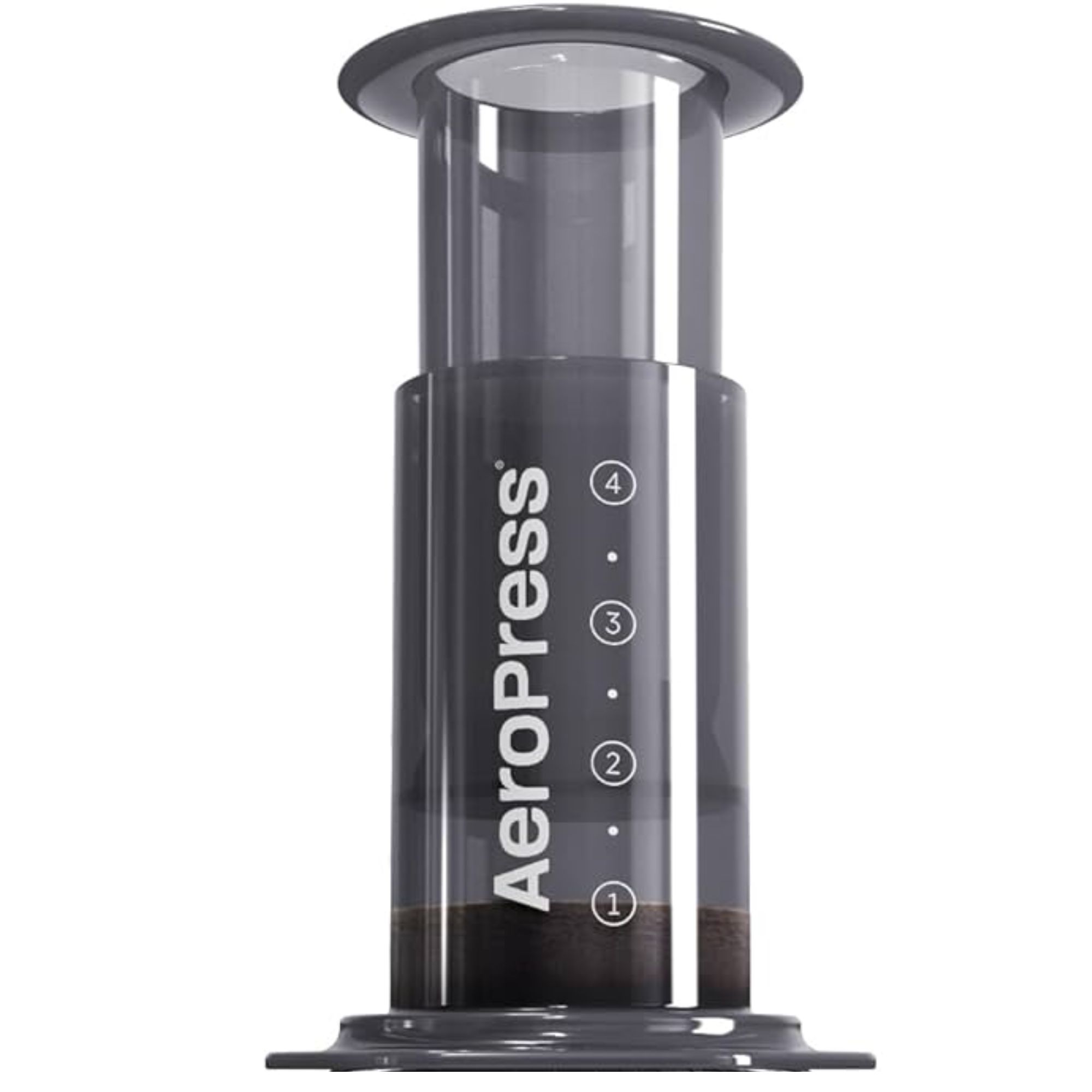
The original AeroPress is a classic. It's the one Hoffman uses in all of his videos, although he says to choose the one which you think best suits your needs. They're all brilliant brewers. I love the clear model.
What if your coffee isn't perfect?
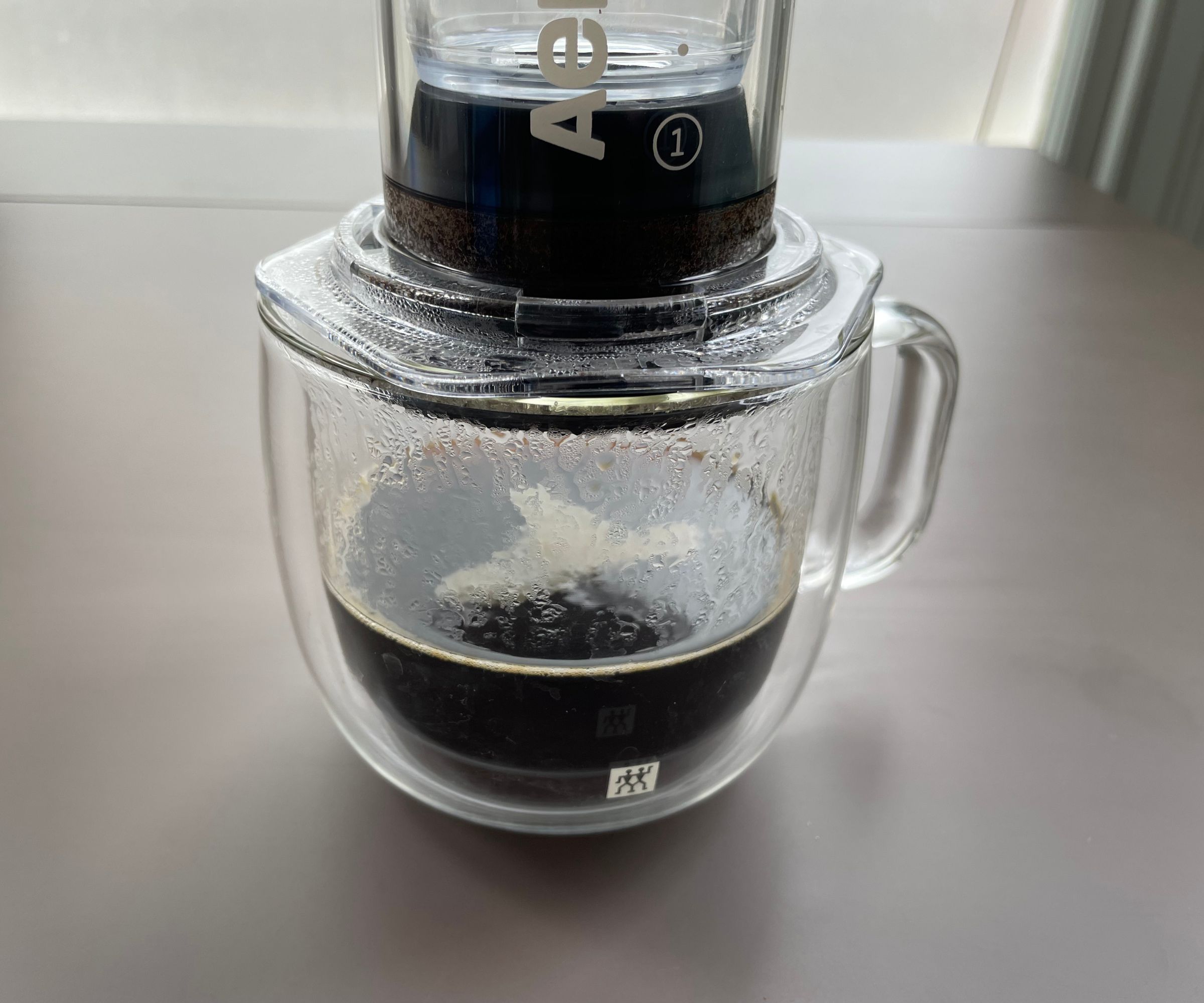
This should be a failsafe way to make a delicious cup of coffee, so if it tastes sour, bitter, or acidic, there are a few things you should check. James explains 'Any bad flavors are going to be the grind size and maybe the temperature.' You'll want to tweak these on a few accounts.
'If you've got too much bitterness in your cup, chances are you might have ground a bit fine or brewed a bit hot for your coffee.' He also recommends doing the opposite if you've got a bit of sourness in your cup. Feel free to get to maximum temperature and try grinding a bit finer. Your coffee should be perfect after that.
FAQs
Do I need smart coffee scales to make coffee?
In James Hoffman's video on smart coffee scales, he concludes that the average coffee enthusiast probably doesn't need all the details and controls that smart coffee scales would. You can get by with simple scales. However, if you want to get techy, these are some of the best on the market.
- Brewista ratio: probably the best smart scales you can buy
- Pearl Model S: enough technical capacity for professionals, but the price tag says the same
- OXO Brew: reasonably priced and simple with a useful timer setting too
- Fellow Tally: expensive, but accurate, precise, and automatic
How should I be using my AeroPress?
There are two main different ways to use an AeroPress, both of which I've covered in my article on how to use an AeroPress.

Laura is our eCommerce editor. As a fully qualified barista, she's our expert in all things coffee and has tested over thirty of the best coffee makers on the market. She has also interviewed Q-Graders and world-leading experts in the coffee industry, so has an intimate knowledge of all things coffee. Before joining Homes & Gardens, she studied English at Oxford University. Whilst studying, she trained as a master perfumer and worked in the luxury fragrance industry for five years. Her collection of home fragrance is extensive and she's met and interviewed five of the world's finest perfumers (also known as 'noses'). As a result of this expansive fragrance knowledge, she always puts quality and style over quantity and fads. Laura looks for products which have been designed simply and with thoughtful finishes.
